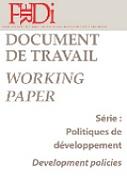Since several years, the Government of Zimbabwe is committed to making progress towards universal health coverage. Unmet health needs are huge and the health system suffers from serious dysfunctions and multifaceted weaknesses. The situation is further complicated by a weak governance environment. To address these challenging issues, many of which would require an increase in public health expenditures, the government faces severe macroeconomic constraints as fiscal space and foreign currencies are limited. In this context, improving the efficiency of health expenditure is of paramount importance. This study focuses on the efficiency of district hospitals, whose role is crucial for the strengthening of the health care system and achieving significant results in implementing the universal health coverage. It covers the period 2015 - 2017. It was carried out at the request of the Ministry of Health and Child Care (MoHCC).
The results were thoroughly discussed with the MoHCC and included in the medium-term evaluation process of the 2016 - 2020 health strategy. Efficiency scores have being calculated following the Simar and Wilson double bootstrap procedure. The average efficiency of district hospitals is low, stagnant over 2015-2017. Moreover, efficiency scores are widely dispersed showing a large heterogeneity in district hospitals’ performance. The findings suggest significant room for manoeuvre to getting more results with the resources spent. The analysis of the efficiency drivers was constrained by the availability of data. It has been performed with truncated regression. It shows the importance of both supply and demand-side factors, leading to several policy-oriented considerations. The study also highlights important shortcomings in the routine collection of basic data that need to be addressed by the MoHCC so as not to bias the decision-making process.
Corresponding Authors : Marlene Guillon (marlene.guillon@umontpellier.fr), Jacky Mathonnat (jacky.mathonnat@uca.fr)
